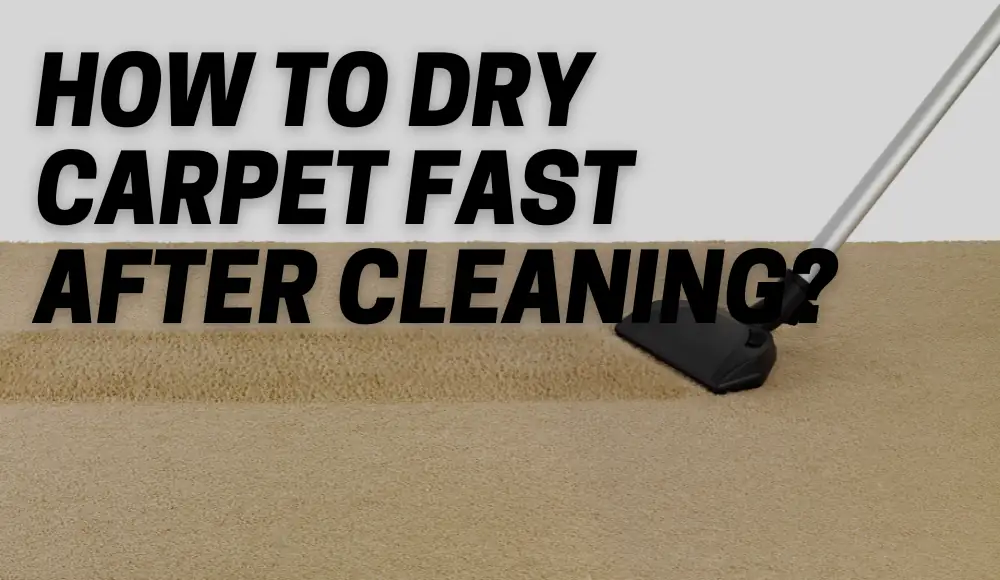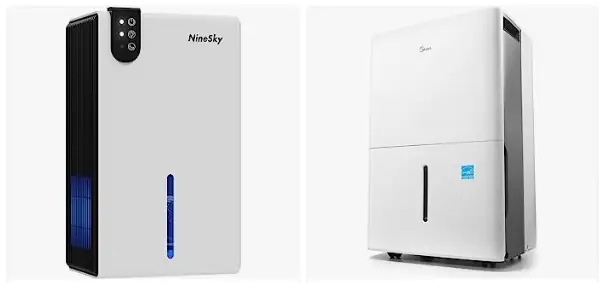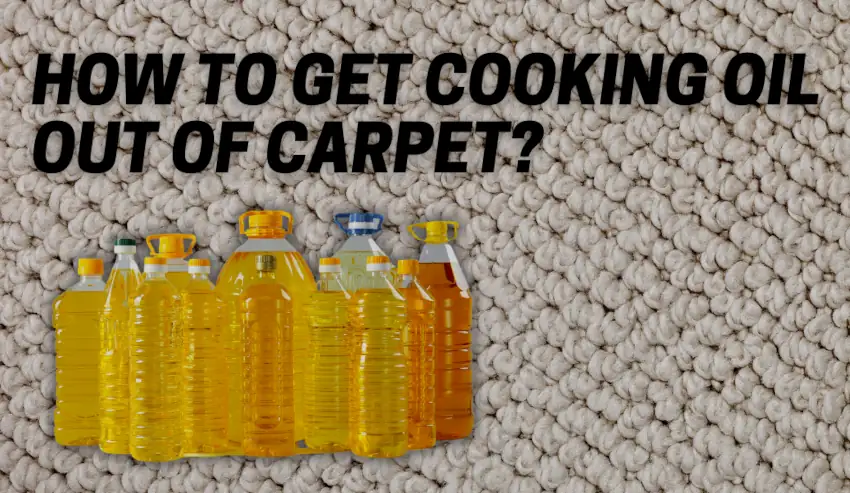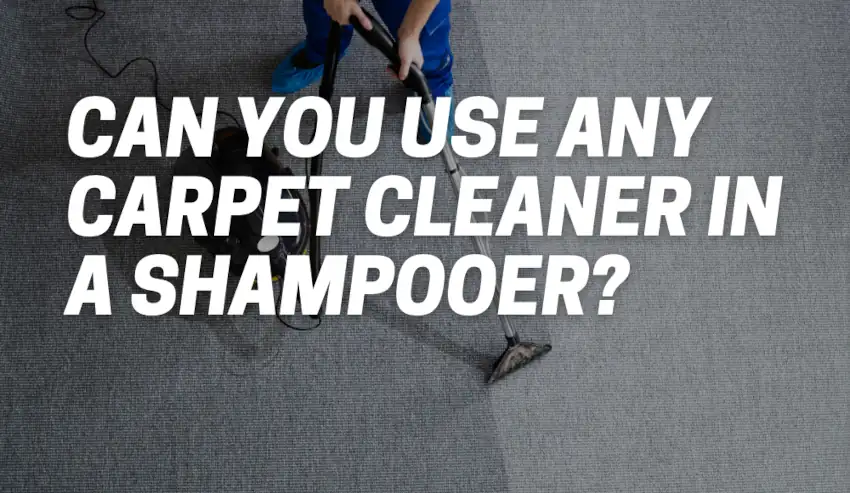Last updated on September 12th, 2023 at 12:22 am
Drying a wet carpet is a crucial step after cleaning to prevent mold growth, foul odors, and potential damage to your flooring. Whether you spilled a glass of water, dealt with a flood, or recently had your carpet professionally cleaned, it’s essential to dry it thoroughly to maintain a clean and healthy environment in your home.
In this comprehensive guide, we will explore various methods and techniques to dry your carpet quickly and efficiently.
How Long Does Carpet Cleaning Take?
Before we dive into the specifics of drying wet carpet, let’s briefly discuss the duration of the carpet cleaning process itself.
The time required for carpet cleaning depends on several factors, including the size of the area, the level of dirt and stains, and the cleaning method used.
On average, carpet cleaning can take anywhere from 20 minutes to a few hours, but this may vary based on the circumstances.
If you’re hiring a professional carpet cleaning service, they will typically provide an estimated time frame based on the size of your carpeted area. It’s important to factor in additional time for preparation, moving furniture, and allowing the carpet to dry thoroughly after the cleaning process.
How long does it take to clean carpets professionally?
—
How Long Does It Take for Carpet to Dry After Steam Cleaning?
Steam cleaning, also known as hot water extraction, is a popular method for deep cleaning carpets. This process involves injecting hot water and cleaning solution into the carpet fibers and then extracting the mixture along with dirt and debris.
After steam cleaning, the carpet will be damp and will require some time to dry completely.
The drying time can vary depending on factors such as ambient humidity, airflow, and carpet thickness. In general, it may take anywhere from 4 to 24 hours for the carpet to dry thoroughly after steam cleaning.
To expedite the drying process, it’s important to promote airflow and reduce humidity in the room.
Open windows and doors to allow fresh air to circulate, and consider using fans strategically to create cross ventilation.
Placing dehumidifiers in the room can also help remove excess moisture from the air, further enhancing the drying efficiency.
Dehumidifiers for drying wet carpet
How Long Does Wool Carpet Take to Dry?
Wool carpets are known for their luxurious feel and durability.
However, due to the nature of wool fibers, they tend to absorb moisture more readily than synthetic carpets. Therefore, drying a wet wool carpet requires special attention.
The drying time for wool carpets can range from 12 to 48 hours, depending on the thickness of the pile, ambient conditions, and airflow.
To expedite the drying process, it’s crucial to follow the appropriate techniques mentioned earlier. Ensure proper airflow in the room by opening windows and using fans strategically. Use dehumidifiers if necessary to maintain optimal humidity levels.
Additionally, it’s important to note that wool carpets can be more sensitive to heat and excessive moisture. Avoid placing direct heat sources or high-temperature blowers directly on the carpet, as this can potentially damage the fibers.
It’s always best to follow manufacturer recommendations and consult with a professional if you have any concerns about drying your wool carpet effectively.
Fan or Heater: Which Helps Dry Carpet Faster?
When it comes to drying wet carpets, the right combination of airflow and temperature can significantly expedite the process. Both fans and heaters play a crucial role but in different ways.
Fans
Fans are effective in promoting airflow and evaporation. By placing fans strategically around the damp carpet, you can increase air circulation, facilitating quicker drying. Ceiling fans, pedestal fans, or even box fans can be used to create a cross breeze and maximize drying efficiency.
Heaters
Heaters are useful for maintaining a warm environment, which aids in faster evaporation. Warm air can hold more moisture, allowing it to absorb the excess moisture from the carpet. However, caution must be exercised when using heaters to prevent overheating or damage to the carpet fibers.
To dry your carpet faster, it’s best to combine the use of fans and heaters.
By setting up fans to create airflow and using heaters to maintain a warm temperature, you can accelerate the drying process and achieve optimal results.
How to Dry Damp Carpet Fast
Now that we understand the importance of drying wet carpets and the role of airflow and temperature, let’s explore some practical steps to dry the damp carpet quickly:
1. Absorb Excess Moisture: Start by using clean towels or absorbent cloths to blot and soak up as much moisture as possible from the wet carpet. Press down firmly to encourage absorption. Be sure to replace the towels as they become saturated.
2. Increase Airflow: Open windows and doors to allow fresh air to circulate throughout the room. This will help remove excess moisture from the carpet. Additionally, use fans strategically to create a cross breeze and promote faster evaporation.
3. Use Dehumidifiers: Dehumidifiers are highly effective in removing excess moisture from the air, reducing humidity levels, and expediting the drying process. Place one or more dehumidifiers in the room to enhance the overall drying efficiency.
4. Elevate Furniture: If there is any furniture on the damp carpet, it’s essential to elevate it using wooden blocks or aluminum foil to prevent further damage and allow air to circulate underneath. This will help prevent the transfer of moisture from the furniture to the carpet.
5. Utilize Baking Soda: Sprinkle baking soda generously over the damp carpet. Baking soda not only absorbs moisture but also helps eliminate any lingering odors. Leave it on the carpet for a few hours or overnight before vacuuming it up.
6. Professional Carpet Dryers: For larger areas or severe water damage, consider renting or hiring professional carpet dryers. These powerful machines are specifically designed to expedite the drying process and restore your carpet to its original condition.
Remember, the drying time can vary depending on factors such as carpet thickness, humidity levels, and the extent of moisture present.
Be patient and monitor the carpet’s progress regularly to ensure it is drying effectively.
FAQs: Quick Answers to Common Questions
Can You Walk on Wet Carpet After Cleaning?
It is generally not recommended to walk on the wet carpet immediately after cleaning. Wet carpet is more susceptible to damage and staining. To avoid undoing the cleaning process or leaving footprints, it’s best to wait until the carpet is completely dry before walking on it.
Can You Put Furniture Back on Damp Carpet?
Placing furniture back on damp carpet can lead to problems such as mold growth or furniture stains. It’s crucial to allow the carpet to dry fully before returning furniture to its original position. Elevating the furniture using blocks or foil, as mentioned earlier, will help protect both the carpet and the furniture.
What to Put Under Furniture on Wet Carpet?
To protect your furniture and the wet carpet, it’s advisable to place wooden blocks or aluminum foil under the furniture legs. These materials will act as barriers, preventing moisture transfer from the furniture to the carpet and reducing the risk of damage.
Additional Tips and Best Practices
To further enhance the effectiveness of the drying process and ensure the best possible outcome, consider the following additional tips and best practices:
- Proper Ventilation: Ensure that the room is well-ventilated by opening windows and doors. This will help facilitate airflow and promote faster drying. If the weather permits, you can also use a box fan to exhaust the moist air out of the room.
- Air Conditioning: If you have air conditioning, turn it on to lower the room’s temperature and humidity levels. Cool air helps in reducing moisture content and aids in the evaporation process.
- Spot Drying: Pay attention to areas with excessive moisture or stubborn stains. Use a clean, dry cloth or paper towels to spot-dry those areas, gently pressing down to absorb as much moisture as possible.
- Carpet Rakes or Brushes: Consider using carpet rakes or brushes to gently lift the carpet fibers. This will promote better airflow and help the carpet dry faster. However, be cautious not to overdo it, as excessive agitation can damage the carpet fibers.
- Natural Sunlight: If weather conditions allow, you can take advantage of natural sunlight to aid in the drying process. Direct sunlight can help evaporate moisture from the carpet, but be cautious of prolonged exposure to sunlight, as it may cause discoloration.
- Rotate Furniture: If you have furniture on the damp carpet, periodically move and rotate it to allow airflow and prevent indentation marks. This will also help ensure that all areas of the carpet dry uniformly.
- Professional Assistance: In cases of severe water damage, extensive flooding, or if you’re uncertain about the drying process, it’s advisable to seek professional assistance. Water damage restoration specialists have the expertise and equipment to thoroughly dry your carpet and mitigate any potential damage.
Remember, the specific drying time for your carpet may vary based on environmental factors and the severity of the moisture.
It’s important to be patient and allow ample time for the carpet to dry completely before resuming regular activities or replacing furniture.
Useful Information: Carpet Drying Techniques Comparison
To provide you with a comprehensive overview, here’s a comparison of various carpet drying techniques:
| Drying Technique | Description |
|---|---|
| Air Drying | Natural drying method that relies on open windows, airflow, and evaporation. Suitable for moderate moisture levels and smaller areas. |
| Fans | Increase air circulation and promote faster evaporation. Use various types of fans strategically placed around the damp carpet to maximize drying efficiency. |
| Heaters | Maintain a warm environment to expedite evaporation. Use caution to avoid overheating or damaging the carpet fibers. |
| Dehumidifiers | Remove excess moisture from the air, reducing humidity levels and enhancing overall drying efficiency. Especially beneficial in humid environments. |
| Professional Carpet Dryers | Powerful machines designed specifically for drying carpets. Ideal for larger areas or severe water damage situations. Rent or hire professionals for optimal results. |
Remember, the combination of techniques and the specific approach you choose may vary depending on the circumstances and extent of moisture in your carpet.
By following these guidelines and using the appropriate techniques, you can ensure that your carpet dries fast and effectively, minimizing the risk of mold, odor, and other potential issues.
Conclusion
Drying wet carpet thoroughly and efficiently is essential to maintain a clean and healthy living environment. By following the steps outlined in this guide and utilizing the appropriate techniques, such as using fans, heaters, and dehumidifiers, you can expedite the drying process and restore your carpet to its optimal condition.
Remember to exercise patience and monitor the drying progress regularly to ensure the best results.




